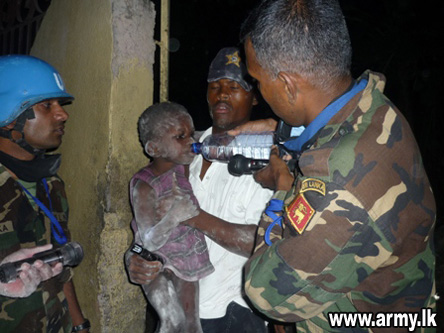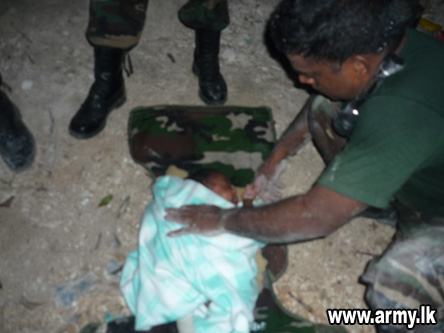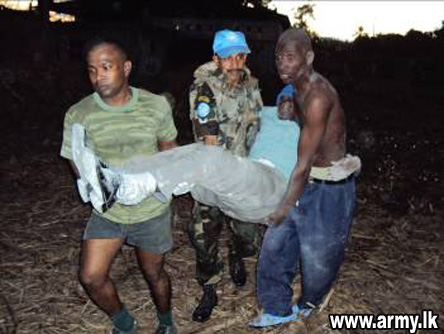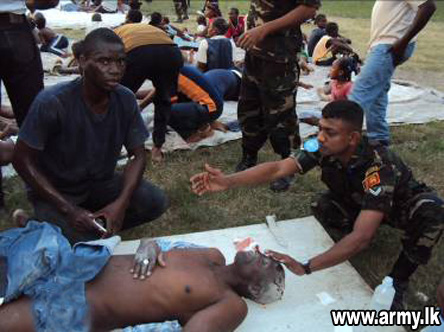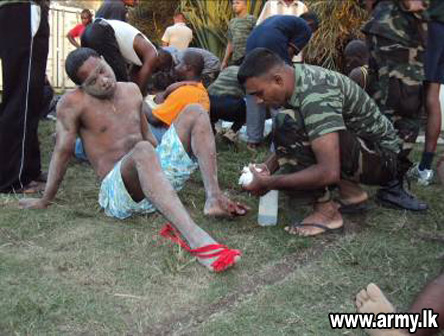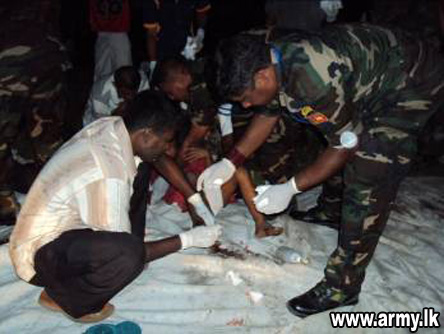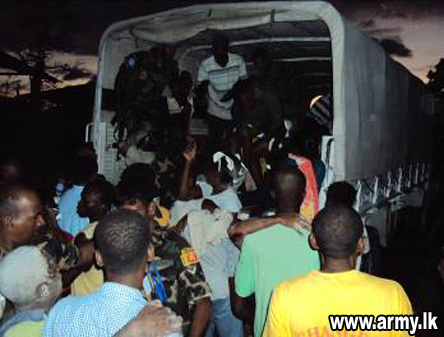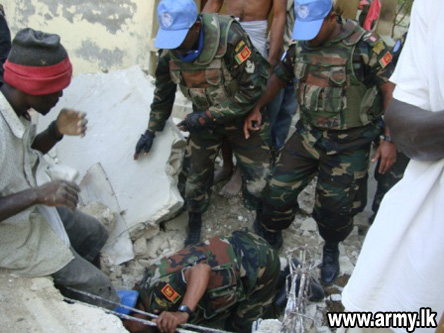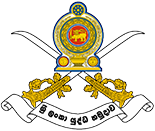PHOTOS sent from the earthquake-hit Port-au-Prince, Haiti speak more words than mere images of the humanitarian roles, being played by Sri Lankan troops serving UN Peace Keeping assignments in Haiti as emergency aid is trickling through to victims on Haitian streets.
Sri Lankan troopers while providing basic food, water and medicine to affected victims are still busy evacuating and rescuing trapped civilians under the rubble of collapsed buildings in Port-au-Prince. Though Sri Lankan soldiers are supported by other aid workers and relief troops from foreign countries, our troopers have been giving their assistance to bury decomposing bodies, dispatch of victims to nearest hospitals, transport of the victims to the makeshift shelters, etc.
Meanwhile, an AFP report filled in Port-au-Prince on Sunday (17) has this to say;
SRI LANKAN soldiers on a UN Peace Keeping Mission in Haiti are involved in emergency relief activities and distributing food among the earthquake victims of the country, agency reports said.
AFP news service reported that the first shipment of UN food aid arrived on Saturday in the ruined Haitian town of Leogane, where street after street of homes and businesses were torn apart and up to 30,000 were feared dead.
Just 17 kilometres (10 miles) west of the capital Port-au-Prince, Leogane was close to the epicenter of Tuesday's 7.0-magnitude ’quake, and almost every structure, from the historic central church to seafront beer shacks, was damaged.
But with the international rescue effort concentrated in Haiti's capital, Leogane's people have so far been left to fend for themselves in impoverished squatter camps.
On Saturday, Sri Lankan United Nations troops escorted in a single truckload of high energy biscuits for the World Food Program, and small teams of international aid workers made their first forays to inspect the damage.
“It's the very epicenter of the earthquake, and many, many thousands are dead,” said World Food Program spokesman David Orr, as the peacekeepers raised the UN, Sri Lankan and Haitian banners for the television crews.
“Nearly every house was destroyed here. The military are talking about 20,000 to 30,000 dead,” he said, as WFP staff handed out packs of biscuits to a crowd that had gathered in front of Leogane's ruined city hall.
The cheerful queues of mainly young men and women, marshalled by the Sri Lankans, grinned playfully as youngsters tried to jump in front, some filming each other with their mobile phones as they awaited their emergency rations.
For, although locals welcomed the arrival of the aid effort as a sign they had not been abandoned, the biscuit drop was of mainly symbolic value.
Barely 20 metres (yards) from the truck, stalls sold onions, eggs and garlic -- and mothers cooked steaming bowls of rice and beans under shelters of wood and sheets that the UN and USAID had left behind from previous hurricane disasters.
Leogane is in desperate need -- but not of biscuits.
With all public and health services out, and the bulk of the population homeless and living in cramped bivouacs, the city needs medical supplies and clinics.
And, in the longer term, it will need to be rebuilt.
“It's a small distribution that's not worthy of the catastrophe that has befallen us,” said 49-year-old events promoter Maxime Dumont.
Two jeeploads of foreign aid workers, including one from Save the Children, had also come to Leogane to see what they could do to help. But all three city hospitals were closed, and one had entirely collapsed.
US Secretary of State Hillary Clinton, who visited Haiti on Saturday, promised aid would soon begin to be shipped outside the capital.
“The other thing we're trying to do is to get our helicopters outside the immediately affected area, outside of Port-au-Prince, because people are leaving the city,” Clinton said. (Story Courtesy- Army & DailyMirror , Photo Courtesy-Army)
